手把手教你使用RT-Thread制作GD32 ARM系列BSP
熟悉RT-Thread的朋友都知道,RT-Thread提供了許多BSP,但不是所有的板子都能找到相應的BSP,這時就需要移植新的BSP。RT-Thread的所有BSP中,最完善的BSP就是STM32系列,但從2020年下半年開始,國內出現史無前例的芯片缺貨潮,芯片的交期和價格不斷拉升,STM32的價格也是水漲船高,很多朋友也在考慮使用國產替代,筆者使用的兆易創新的GD32系列,我看了下RT-Thread中GD系列BSP,都是玩家各自為政,每個人都是提交自己使用的板子的BSP,充斥著大量冗余的代碼,對于有強迫癥的我就非常不爽,就根據手頭的板子,參看STM32的BSP架構,構建了GD32的BSP架構。
筆者使用的開發板是兆易創新設計的GD32407V-START開發板。其主控芯片為GD32F407VKT6,主頻168MHz,內部3072K Flash,192KB SRAM,資源相當豐富。

1 BSP框架制作
在具體移植GD32407V-START的BSP之前,先做好GD32的BSP架構。BSP框架結構如下圖所示:

GD32的BSP架構主要分為三個部分:libraries、tools和具體的Boards,其中libraries包含了GD32的通用庫,包括每個系列的Firmware Library以及適配RT-Thread的drivers;tools是生成工程的Python腳本工具;另外就是Boards文件,當然這里的Boards有很多,我這里值列舉了GD32407V-START。
這里先談談libraries和tools的構建,然后在后文單獨討論具體板級BSP的制作。
1.1 Libraries構建
Libraries文件夾包含兆易創新提供的固件庫,這個直接在兆易創新的官網就可以下載。
下載地址:http://www.gd32mcu.com/cn/download/
然后將GD32F4xx_Firmware_Library復制到libraries目錄下,其他的系列類似。

GD32F4xx_Firmware_Library就是官方的文件,基本是不用動的,只是在文件夾中需要添加構建工程的腳本文件SConscript,其實也就是Python腳本。

SConscript文件的內容如下:
import rtconfig #導包
from building import *
# get current directory
cwd = GetCurrentDir() #獲取當然路徑
# The set of source files associated with this SConscript file.
src = Split('''
CMSIS/GD/GD32F4xx/Source/system_gd32f4xx.c
GD32F4xx_standard_peripheral/Source/gd32f4xx_gpio.c
GD32F4xx_standard_peripheral/Source/gd32f4xx_rcu.c
GD32F4xx_standard_peripheral/Source/gd32f4xx_exti.c
GD32F4xx_standard_peripheral/Source/gd32f4xx_misc.c
GD32F4xx_standard_peripheral/Source/gd32f4xx_syscfg.c
''')#將括號中的字符串分割后成列表(list),以便包含到工程中
if GetDepend(['RT_USING_SERIAL']):#如果打開了RT_USING_SERIAL的宏,則會包含以下源文件
src += ['GD32F4xx_standard_peripheral/Source/gd32f4xx_usart.c']
if GetDepend(['RT_USING_I2C']):
src += ['GD32F4xx_standard_peripheral/Source/gd32f4xx_i2c.c']
if GetDepend(['RT_USING_SPI']):
src += ['GD32F4xx_standard_peripheral/Source/gd32f4xx_spi.c']
if GetDepend(['RT_USING_CAN']):
src += ['GD32F4xx_standard_peripheral/Source/gd32f4xx_can.c']
if GetDepend(['BSP_USING_ETH']):
src += ['GD32F4xx_standard_peripheral/Source/gd32f4xx_enet.c']
if GetDepend(['RT_USING_ADC']):
src += ['GD32F4xx_standard_peripheral/Source/gd32f4xx_adc.c']
if GetDepend(['RT_USING_DAC']):
src += ['GD32F4xx_standard_peripheral/Source/gd32f4xx_dac.c']
if GetDepend(['RT_USING_RTC']):
src += ['GD32F4xx_standard_peripheral/Source/gd32f4xx_rtc.c']
if GetDepend(['RT_USING_WDT']):
src += ['GD32F4xx_standard_peripheral/Source/gd32f4xx_wwdgt.c']
src += ['GD32F4xx_standard_peripheral/Source/gd32f4xx_fwdgt.c']
if GetDepend(['RT_USING_SDIO']):
src += ['GD32F4xx_standard_peripheral/Source/gd32f4xx_sdio.c']
#頭文件路徑
path = [
cwd + '/CMSIS/GD/GD32F4xx/Include',
cwd + '/CMSIS',
cwd + '/GD32F4xx_standard_peripheral/Include',]
CPPDEFINES = ['USE_STDPERIPH_DRIVER']
#定義一個組,組名為'Libraries', depend為空表示依賴任何一個其他宏,另外當前的頭文件路徑添加到工程中
group = DefineGroup('Libraries', src, depend = [''], CPPPATH = path, CPPDEFINES = CPPDEFINES)
Return('group')
該文件主要的作用就是添加庫文件和頭文件路徑,一部分文件是屬于基礎文件,因此直接調用Python庫的Split包含,另外一部分文件是根據實際的應用需求添加的。
這里是以GD32F4來舉例的,其他系列的都是類似的。
接下來說說Kconfig文件,這里是對內核和組件的功能進行配置,對RT-Thread的組件進行自由裁剪。
如果使用RT-Thread studio,則通過RT-Thread Setting可以體現Kconfig文件的作用。

如果使用ENV環境,則在使用 menuconfig配置和裁剪 RT-Thread時體現。

后面所有的Kconfig文件都是一樣的邏輯。下表列舉一些常用的Kconfig句法規則。
| 關鍵詞 | 說明 |
| config | 此關鍵字定義了一新的配置選項 |
| menuconfig | 此關鍵字和前面的關鍵字很相似,但它在前面的基礎上要求所有的子選項作為獨立的行顯示。 |
| choice/endchoice | 該關鍵字定義了一組選擇項。 |
| comment | 這里定義了在配置過程中顯示給用戶的注釋,該注釋還將寫進輸出文件中。格式說明: comment "eg: description content" |
| menu / endmenu | 這里定義了一個菜單,所有依賴于此菜單的選項都是它的子選項。 |
| if/endif | 這里定義了if結構。 |
| source | 讀取其他具體的配置文件,其他配置文件會被解析。 |
Kconfig的語法規則網上資料很多,自行去學習吧。
bsp/gd32/arm/libraries/Kconfig內容如下:
config SOC_FAMILY_GD32
bool
config SOC_SERIES_GD32F4
bool
select ARCH_ARM_CORTEX_M4
select SOC_FAMILY_GD32
因為該架構目前筆者只移植了GD32F4的,因此這里的內容比較少,如果有些的系列,直接參考F4的配置例子在這里加就可以了。
最后談談gd32_drivers,這個文件夾就是GD32的外設驅動文件夾,為上層應用提供調用接口。

該文件夾是整個GD32共用的,因此在編寫和修改都要慎重。關于drv_xxx文件在后句具體移植BSP的時候講解,這里主要將整體架構,SConscript和Kconfig的作用和前面的一樣,只是具體的內容不同罷了。
好了,先看bsp/gd32/arm/libraries/gd32_drivers/SConscript文件。
import('RTT_ROOT')
import('rtconfig')
from building import *
cwd = GetCurrentDir()
# add the general drivers.
src = Split("""
""")
# add pin drivers.
if GetDepend('RT_USING_PIN'):
src += ['drv_gpio.c']
# add usart drivers.
if GetDepend(['RT_USING_SERIAL']):
src += ['drv_usart.c']
# add adc drivers.
if GetDepend('RT_USING_ADC'):
src += ['drv_adc.c']
# add i2c drivers.
if GetDepend(['RT_USING_I2C', 'RT_USING_I2C_BITOPS']):
if GetDepend('BSP_USING_I2C0') or GetDepend('BSP_USING_I2C1') or GetDepend('BSP_USING_I2C2') or GetDepend('BSP_USING_I2C3'):
src += ['drv_soft_i2c.c']
# add spi drivers.
if GetDepend('RT_USING_SPI'):
src += ['drv_spi.c']
# add spi flash drivers.
if GetDepend('RT_USING_SFUD'):
src += ['drv_spi_flash.c', 'drv_spi.c']
# add hwtimer drivers.
if GetDepend('RT_USING_HWTIMER'):
src += ['drv_hwtimer.c']
# add rtc drivers.
if GetDepend('RT_USING_RTC'):
src += ['drv_rtc.c']
# add iwdt drivers.
if GetDepend('RT_USING_WDT'):
src += ['drv_iwdt.c']
path = [cwd]
group = DefineGroup('Drivers', src, depend = [''], CPPPATH = path)
Return('group')
和GD32F4xx_Firmware_Library文件夾中的SConscript是類似的。
bsp/gd32/arm/libraries/gd32_drivers/Kconfig文件結構如下:
if BSP_USING_USBD
config BSP_USBD_TYPE_FS
bool
# "USB Full Speed (FS) Core"
config BSP_USBD_TYPE_HS
bool
# "USB High Speed (HS) Core"
config BSP_USBD_SPEED_HS
bool
# "USB High Speed (HS) Mode"
config BSP_USBD_SPEED_HSINFS
bool
# "USB High Speed (HS) Core in FS mode"
config BSP_USBD_PHY_EMBEDDED
bool
# "Using Embedded phy interface"
config BSP_USBD_PHY_UTMI
bool
# "UTMI: USB 2.0 Transceiver Macrocell Interace"
config BSP_USBD_PHY_ULPI
bool
# "ULPI: UTMI+ Low Pin Interface"
endif
1.2 Tools構建
該文件夾就是工程構建的腳本,
import os
import sys
import shutil
cwd_path = os.getcwd()
sys.path.append(os.path.join(os.path.dirname(cwd_path), 'rt-thread', 'tools'))
def bsp_update_board_kconfig(dist_dir):
# change board/kconfig path
if not os.path.isfile(os.path.join(dist_dir, 'board/Kconfig')):
return
with open(os.path.join(dist_dir, 'board/Kconfig'), 'r') as f:
data = f.readlines()
with open(os.path.join(dist_dir, 'board/Kconfig'), 'w') as f:
for line in data:
if line.find('../libraries/gd32_drivers/Kconfig') != -1:
position = line.find('../libraries/gd32_drivers/Kconfig')
line = line[0:position] + 'libraries/gd32_drivers/Kconfig"\n'
f.write(line)
# BSP dist function
def dist_do_building(BSP_ROOT, dist_dir):
from mkdist import bsp_copy_files
import rtconfig
print("=> copy gd32 bsp library")
library_dir = os.path.join(dist_dir, 'libraries')
library_path = os.path.join(os.path.dirname(BSP_ROOT), 'libraries')
bsp_copy_files(os.path.join(library_path, rtconfig.BSP_LIBRARY_TYPE),
os.path.join(library_dir, rtconfig.BSP_LIBRARY_TYPE))
print("=> copy bsp drivers")
bsp_copy_files(os.path.join(library_path, 'gd32_drivers'), os.path.join(library_dir, 'gd32_drivers'))
shutil.copyfile(os.path.join(library_path, 'Kconfig'), os.path.join(library_dir, 'Kconfig'))
bsp_update_board_kconfig(dist_dir)
以上代碼很簡單,主要使用了Python的OS模塊的join函數,該函數的作用就是連接兩個或更多的路徑名。最后將BSP依賴的文件復制到指定目錄下。
在使用scons --dist命令打包的時候,就是依賴的該腳本,生成的dist文件夾的工程到任何目錄下使用,也就是將BSP相關的庫以及內核文件提取出來,可以將該工程任意拷貝。
需要注意的是,使用scons --dist打包后需要修改board/Kconfig中的庫路徑,因此這里調用了bsp_update_board_kconfig方法修改。
1.3 gd32407v-start構建
該文件夾就gd32407v-start的具體BSP文件,文件結構如下:

在后面將具體講解如何構建該部分內容。
2 BSP移植
2.1 Keil環境準備
目前市面通用的MDK for ARM版本有Keil 4和Keil 5:使用Keil 4建議安裝4.74及以上;使用Keil 5建議安裝5.20以上版本。筆者的MDK是5.30。
從MDK的官網可以下載得到MDK的安裝包,然后安裝即可,關于的MDK安裝請看筆者的教程。
MDK安裝教程:https://blog.csdn.net/bruceoxl/article/details/108548573
MDK下載地址:https://www.keil.com/download/product/

安裝完成后會自動打開,我們將其關閉。
接下來我們下載GD32F4xx的軟件支持包。
下載地址:http://www.gd32mcu.com/cn/download

下載好后雙擊GigaDevice.GD32F4xx_DFP.2.1.0.pack運行即可:

點擊[Next]即可安裝完成。

安裝成功后,重新打開Keil,則可以在File->Device Database中出現Gigadevice的下拉選項,點擊可以查看到相應的型號。

2.2 BSP工程制作
1.構建基礎工程
首先看看RT-Thread代碼倉庫中已有很多BSP,而我要移植的是Cortex-M4內核。這里我找了一個相似的內核,把它復制一份,并修改文件名為:gd32407v-start。這樣就有一個基礎的工程。然后就開始增刪改查,完成最終的BSP,幾乎所有的BSP的制作都是如此。
2.修改BSP構建腳本
bsp/gd32/arm/gd32407v-start/SConstruct修改后的內容如下:
import os
import sys
import rtconfig
if os.getenv('RTT_ROOT'):
RTT_ROOT = os.getenv('RTT_ROOT')
else:
RTT_ROOT = os.path.normpath(os.getcwd() + '/../../../..')
sys.path = sys.path + [os.path.join(RTT_ROOT, 'tools')]
try:
from building import *
except:
print('Cannot found RT-Thread root directory, please check RTT_ROOT')
print(RTT_ROOT)
exit(-1)
TARGET = 'rtthread.' + rtconfig.TARGET_EXT
DefaultEnvironment(tools=[])
env = Environment(tools = ['mingw'],
AS = rtconfig.AS, ASFLAGS = rtconfig.AFLAGS,
CC = rtconfig.CC, CCFLAGS = rtconfig.CFLAGS,
AR = rtconfig.AR, ARFLAGS = '-rc',
CXX = rtconfig.CXX, CXXFLAGS = rtconfig.CXXFLAGS,
LINK = rtconfig.LINK, LINKFLAGS = rtconfig.LFLAGS)
env.PrependENVPath('PATH', rtconfig.EXEC_PATH)
if rtconfig.PLATFORM == 'iar':
env.Replace(CCCOM = ['$CC $CCFLAGS $CPPFLAGS $_CPPDEFFLAGS $_CPPINCFLAGS -o $TARGET $SOURCES'])
env.Replace(ARFLAGS = [''])
env.Replace(LINKCOM = env["LINKCOM"] + ' --map rtthread.map')
Export('RTT_ROOT')
Export('rtconfig')
SDK_ROOT = os.path.abspath('./')
if os.path.exists(SDK_ROOT + '/libraries'):
libraries_path_prefix = SDK_ROOT + '/libraries'
else:
libraries_path_prefix = os.path.dirname(SDK_ROOT) + '/libraries'
SDK_LIB = libraries_path_prefix
Export('SDK_LIB')
# prepare building environment
objs = PrepareBuilding(env, RTT_ROOT, has_libcpu=False)
gd32_library = 'GD32F4xx_Firmware_Library'
rtconfig.BSP_LIBRARY_TYPE = gd32_library
# include libraries
objs.extend(SConscript(os.path.join(libraries_path_prefix, gd32_library, 'SConscript')))
# include drivers
objs.extend(SConscript(os.path.join(libraries_path_prefix, 'Drivers', 'SConscript')))
# make a building
DoBuilding(TARGET, objs)
該文件用于鏈接所有的依賴文件,并調用make進行編譯。
3.修改KEIL的模板工程
雙擊:template.uvprojx即可修改模板工程。
修改為對應芯片設備:

修改FLASH和RAM的配置:

修改可執行文件名字:

修改默認調試工具:CMSIS-DAP Debugger。


4.修改board文件夾
(1)修改bsp/gd32/arm/gd32407v-start/board/linker_scripts/link.icf
修改后的內容如下:
/*###ICF### Section handled by ICF editor, don't touch! ****/
/*-Editor annotation file-*/
/* IcfEditorFile="$TOOLKIT_DIR$\config\ide\IcfEditor\cortex_v1_0.xml" */
/*-Specials-*/
define symbol __ICFEDIT_intvec_start__ = 0x08000000;
/*-Memory Regions-*/
define symbol __ICFEDIT_region_ROM_start__ = 0x08000000;
define symbol __ICFEDIT_region_ROM_end__ = 0x082FFFFF;
define symbol __ICFEDIT_region_RAM_start__ = 0x20000000;
define symbol __ICFEDIT_region_RAM_end__ = 0x2002FFFF;
/*-Sizes-*/
define symbol __ICFEDIT_size_cstack__ = 0x2000;
define symbol __ICFEDIT_size_heap__ = 0x2000;
/**** End of ICF editor section. ###ICF###*/
export symbol __ICFEDIT_region_RAM_end__;
define symbol __region_RAM1_start__ = 0x10000000;
define symbol __region_RAM1_end__ = 0x1000FFFF;
define memory mem with size = 4G;
define region ROM_region = mem:[from __ICFEDIT_region_ROM_start__ to __ICFEDIT_region_ROM_end__];
define region RAM_region = mem:[from __ICFEDIT_region_RAM_start__ to __ICFEDIT_region_RAM_end__];
define region RAM1_region = mem:[from __region_RAM1_start__ to __region_RAM1_end__];
define block CSTACK with alignment = 8, size = __ICFEDIT_size_cstack__ { };
define block HEAP with alignment = 8, size = __ICFEDIT_size_heap__ { };
initialize by copy { readwrite };
do not initialize { section .noinit };
keep { section FSymTab };
keep { section VSymTab };
keep { section .rti_fn* };
place at address mem:__ICFEDIT_intvec_start__ { readonly section .intvec };
place in ROM_region { readonly };
place in RAM_region { readwrite,
block CSTACK, block HEAP };
place in RAM1_region { section .sram };
該文件是IAR編譯的鏈接腳本,根據《GD32F407xx_Datasheet_Rev2.1》可知,GD32F407VKT6的flash大小為3072KB,SRAM大小為192KB,因此需要設置ROM和RAM的起始地址和堆棧大小等。
(2)修改bsp/gd32/arm/gd32407v-start/board/linker_scripts/link.ld
修改后的內容如下:
/* Program Entry, set to mark it as "used" and avoid gc */
MEMORY
{
CODE (rx) : ORIGIN = 0x08000000, LENGTH = 3072k /* 3072KB flash */
DATA (rw) : ORIGIN = 0x20000000, LENGTH = 192k /* 192KB sram */
}
ENTRY(Reset_Handler)
_system_stack_size = 0x200;
SECTIONS
{
.text :
{
. = ALIGN(4);
_stext = .;
KEEP(*(.isr_vector)) /* Startup code */
. = ALIGN(4);
*(.text) /* remaining code */
*(.text.*) /* remaining code */
*(.rodata) /* read-only data (constants) */
*(.rodata*)
*(.glue_7)
*(.glue_7t)
*(.gnu.linkonce.t*)
/* section information for finsh shell */
. = ALIGN(4);
__fsymtab_start = .;
KEEP(*(FSymTab))
__fsymtab_end = .;
. = ALIGN(4);
__vsymtab_start = .;
KEEP(*(VSymTab))
__vsymtab_end = .;
. = ALIGN(4);
/* section information for initial. */
. = ALIGN(4);
__rt_init_start = .;
KEEP(*(SORT(.rti_fn*)))
__rt_init_end = .;
. = ALIGN(4);
. = ALIGN(4);
_etext = .;
} > CODE = 0
/* .ARM.exidx is sorted, so has to go in its own output section. */
__exidx_start = .;
.ARM.exidx :
{
*(.ARM.exidx* .gnu.linkonce.armexidx.*)
/* This is used by the startup in order to initialize the .data secion */
_sidata = .;
} > CODE
__exidx_end = .;
/* .data section which is used for initialized data */
.data : AT (_sidata)
{
. = ALIGN(4);
/* This is used by the startup in order to initialize the .data secion */
_sdata = . ;
*(.data)
*(.data.*)
*(.gnu.linkonce.d*)
. = ALIGN(4);
/* This is used by the startup in order to initialize the .data secion */
_edata = . ;
} >DATA
.stack :
{
. = . + _system_stack_size;
. = ALIGN(4);
_estack = .;
} >DATA
__bss_start = .;
.bss :
{
. = ALIGN(4);
/* This is used by the startup in order to initialize the .bss secion */
_sbss = .;
*(.bss)
*(.bss.*)
*(COMMON)
. = ALIGN(4);
/* This is used by the startup in order to initialize the .bss secion */
_ebss = . ;
*(.bss.init)
} > DATA
__bss_end = .;
_end = .;
/* Stabs debugging sections. */
.stab 0 : { *(.stab) }
.stabstr 0 : { *(.stabstr) }
.stab.excl 0 : { *(.stab.excl) }
.stab.exclstr 0 : { *(.stab.exclstr) }
.stab.index 0 : { *(.stab.index) }
.stab.indexstr 0 : { *(.stab.indexstr) }
.comment 0 : { *(.comment) }
/* DWARF debug sections.
* Symbols in the DWARF debugging sections are relative to the beginning
* of the section so we begin them at 0. */
/* DWARF 1 */
.debug 0 : { *(.debug) }
.line 0 : { *(.line) }
/* GNU DWARF 1 extensions */
.debug_srcinfo 0 : { *(.debug_srcinfo) }
.debug_sfnames 0 : { *(.debug_sfnames) }
/* DWARF 1.1 and DWARF 2 */
.debug_aranges 0 : { *(.debug_aranges) }
.debug_pubnames 0 : { *(.debug_pubnames) }
/* DWARF 2 */
.debug_info 0 : { *(.debug_info .gnu.linkonce.wi.*) }
.debug_abbrev 0 : { *(.debug_abbrev) }
.debug_line 0 : { *(.debug_line) }
.debug_frame 0 : { *(.debug_frame) }
.debug_str 0 : { *(.debug_str) }
.debug_loc 0 : { *(.debug_loc) }
.debug_macinfo 0 : { *(.debug_macinfo) }
/* SGI/MIPS DWARF 2 extensions */
.debug_weaknames 0 : { *(.debug_weaknames) }
.debug_funcnames 0 : { *(.debug_funcnames) }
.debug_typenames 0 : { *(.debug_typenames) }
.debug_varnames 0 : { *(.debug_varnames) }
}
該文件是GCC編譯的鏈接腳本,根據《GD32F407xx_Datasheet_Rev2.1》可知,GD32F407VKT6的flash大小為3072KB,SRAM大小為192KB,因此CODE和DATA的LENGTH分別設置為3072KB和192KB,其他芯片類似,但其實地址都是一樣的。
(3)修改bsp/gd32/arm/gd32407v-start/board/linker_scripts/link.sct
該文件是MDK的連接腳本,根據《GD32F407xx_Datasheet_Rev2.1》手冊,因此需要將 LR_IROM1和 ER_IROM1的參數設置為 0x00300000;RAM的大小為192k,因此需要將 RW_IRAM1的參數設置為 0x00030000。
; *************************************************************
; *** Scatter-Loading Description File generated by uVision ***
; *************************************************************
LR_IROM1 0x08000000 0x00300000 { ; load region size_region
ER_IROM1 0x08000000 0x00300000{ ; load address = execution address
*.o (RESET, +First)
*(InRoot$$Sections)
.ANY (+RO)
}
RW_IRAM1 0x20000000 0x00030000{ ; RW data
.ANY (+RW +ZI)
}
}
(4)修改bsp/gd32/arm/gd32407v-start/board/board.h文件
修改后內容如下:
#ifndef __BOARD_H__
#define __BOARD_H__
#include "gd32f4xx.h"
#include "drv_usart.h"
#include "drv_gpio.h"
#include "gd32f4xx_exti.h"
#define EXT_SDRAM_BEGIN (0xC0000000U) /* the begining address of external SDRAM */
#define EXT_SDRAM_END (EXT_SDRAM_BEGIN + (32U * 1024 * 1024)) /* the end address of external SDRAM */
// Internal SRAM memory size[Kbytes] <8-64>
// Default: 64
#ifdef __ICCARM__
// Use *.icf ram symbal, to avoid hardcode.
extern char __ICFEDIT_region_RAM_end__;
#define GD32_SRAM_END &__ICFEDIT_region_RAM_end__
#else
#define GD32_SRAM_SIZE 192
#define GD32_SRAM_END (0x20000000 + GD32_SRAM_SIZE * 1024)
#endif
#ifdef __CC_ARM
extern int Image$$RW_IRAM1$$ZI$$Limit;
#define HEAP_BEGIN (&Image$$RW_IRAM1$$ZI$$Limit)
#elif __ICCARM__
#pragma section="HEAP"
#define HEAP_BEGIN (__segment_end("HEAP"))
#else
extern int __bss_end;
#define HEAP_BEGIN (&__bss_end)
#endif
#define HEAP_END GD32_SRAM_END
#endif
值得注意的是,不同的編譯器規定的堆棧內存的起始地址 HEAP_BEGIN和結束地址 HEAP_END。這里 HEAP_BEGIN和 HEAP_END的值需要和前面的鏈接腳本是一致的,需要結合實際去修改。
(5)修改bsp/gd32/arm/gd32407v-start/board/board.c文件
修改后的文件如下:
#include
#include
#include
#include
/**
* @brief This function is executed in case of error occurrence.
* @param None
* @retval None
*/
void Error_Handler(void)
{
/* USER CODE BEGIN Error_Handler */
/* User can add his own implementation to report the HAL error return state */
while (1)
{
}
/* USER CODE END Error_Handler */
}
/** System Clock Configuration
*/
void SystemClock_Config(void)
{
SysTick_Config(SystemCoreClock / RT_TICK_PER_SECOND);
NVIC_SetPriority(SysTick_IRQn, 0);
}
/**
* This is the timer interrupt service routine.
*
*/
void SysTick_Handler(void)
{
/* enter interrupt */
rt_interrupt_enter();
rt_tick_increase();
/* leave interrupt */
rt_interrupt_leave();
}
/**
* This function will initial GD32 board.
*/
void rt_hw_board_init()
{
/* NVIC Configuration */
#define NVIC_VTOR_MASK 0x3FFFFF80
#ifdef VECT_TAB_RAM
/* Set the Vector Table base location at 0x10000000 */
SCB->VTOR = (0x10000000 & NVIC_VTOR_MASK);
#else /* VECT_TAB_FLASH */
/* Set the Vector Table base location at 0x08000000 */
SCB->VTOR = (0x08000000 & NVIC_VTOR_MASK);
#endif
SystemClock_Config();
#ifdef RT_USING_COMPONENTS_INIT
rt_components_board_init();
#endif
#ifdef RT_USING_CONSOLE
rt_console_set_device(RT_CONSOLE_DEVICE_NAME);
#endif
#ifdef BSP_USING_SDRAM
rt_system_heap_init((void *)EXT_SDRAM_BEGIN, (void *)EXT_SDRAM_END);
#else
rt_system_heap_init((void *)HEAP_BEGIN, (void *)HEAP_END);
#endif
}
該文件重點關注的就是SystemClock_Config配置,SystemCoreClock的定義在system_gd32f4xx.c中定義的。
(6)修改bsp/gd32/arm/gd32407v-start/board/Kconfig文件
修改后內容如下:
menu "Hardware Drivers Config"
config SOC_GD32407V
bool
select SOC_SERIES_GD32F4
select RT_USING_COMPONENTS_INIT
select RT_USING_USER_MAIN
default y
menu "Onboard Peripheral Drivers"
endmenu
menu "On-chip Peripheral Drivers"
config BSP_USING_GPIO
bool "Enable GPIO"
select RT_USING_PIN
default y
menuconfig BSP_USING_UART
bool "Enable UART"
default y
select RT_USING_SERIAL
if BSP_USING_UART
config BSP_USING_UART1
bool "Enable UART1"
default y
config BSP_UART1_RX_USING_DMA
bool "Enable UART1 RX DMA"
depends on BSP_USING_UART1 && RT_SERIAL_USING_DMA
default n
endif
menuconfig BSP_USING_SPI
bool "Enable SPI BUS"
default n
select RT_USING_SPI
if BSP_USING_SPI
config BSP_USING_SPI1
bool "Enable SPI1 BUS"
default n
config BSP_SPI1_TX_USING_DMA
bool "Enable SPI1 TX DMA"
depends on BSP_USING_SPI1
default n
config BSP_SPI1_RX_USING_DMA
bool "Enable SPI1 RX DMA"
depends on BSP_USING_SPI1
select BSP_SPI1_TX_USING_DMA
default n
endif
menuconfig BSP_USING_I2C1
bool "Enable I2C1 BUS (software simulation)"
default n
select RT_USING_I2C
select RT_USING_I2C_BITOPS
select RT_USING_PIN
if BSP_USING_I2C1
config BSP_I2C1_SCL_PIN
int "i2c1 scl pin number"
range 1 216
default 24
config BSP_I2C1_SDA_PIN
int "I2C1 sda pin number"
range 1 216
default 25
endif
source "../libraries/gd32_drivers/Kconfig"
endmenu
menu "Board extended module Drivers"
endmenu
endmenu
這個文件就是配置板子驅動的,這里可根據實際需求添加。
(7)修改bsp/gd32/arm/gd32407v-start/board/SConscript文件
修改后內容如下:
import os
import rtconfig
from building import *
Import('SDK_LIB')
cwd = GetCurrentDir()
# add general drivers
src = Split('''
board.c
''')
path = [cwd]
startup_path_prefix = SDK_LIB
if rtconfig.CROSS_TOOL == 'gcc':
src += [startup_path_prefix + '/GD32F4xx_Firmware_Library/CMSIS/GD/GD32F4xx/Source/GCC/startup_gd32f4xx.s']
elif rtconfig.CROSS_TOOL == 'keil':
src += [startup_path_prefix + '/GD32F4xx_Firmware_Library/CMSIS/GD/GD32F4xx/Source/ARM/startup_gd32f4xx.s']
elif rtconfig.CROSS_TOOL == 'iar':
src += [startup_path_prefix + '/GD32F4xx_Firmware_Library/CMSIS/GD/GD32F4xx/Source/IAR/startup_gd32f4xx.s']
CPPDEFINES = ['GD32F407']
group = DefineGroup('Drivers', src, depend = [''], CPPPATH = path, CPPDEFINES = CPPDEFINES)
Return('group')
該文件主要添加board文件夾的.c文件和頭文件路徑。另外根據開發環境選擇相應的匯編文件,和前面的libraries的SConscript語法是一樣,文件的結構都是類似的,這里就沒有注釋了。
到這里,基本所有的依賴腳本都配置完成了,接下來將通過menuconfig配置工程。
5.menuconfig配置
關閉套接字抽象層。

關閉網絡設備接口。

關閉LWIP協議棧。

GD32407V-START板載沒有以太網,因此這里主要是關閉網絡相關的內容,當然GD32407V-START的資源豐富,不關這些其實也不影響,如果是其他MCU,根據實際需求自行修改吧。
6.驅動修改
一個基本的BSP中,串口是必不可少的,所以還需要編寫串口驅動,這里使用的串口2作為調試串口。
板子上還有LED燈,主要要編寫GPIO驅動即可。
關于串口和LED的驅動可以查看源碼,這里就不貼出來了。
7.應用開發
筆者在applications的main.c中添加LED的應用代碼,
#include
#include
#include
#include
/* defined the LED2 pin: PC6 */
#define LED2_PIN GET_PIN(C, 6)
int main(void)
{
int count = 1;
/* set LED2 pin mode to output */
rt_pin_mode(LED2_PIN, PIN_MODE_OUTPUT);
while (count++)
{
rt_pin_write(LED2_PIN, PIN_HIGH);
rt_thread_mdelay(500);
rt_pin_write(LED2_PIN, PIN_LOW);
rt_thread_mdelay(500);
}
return RT_EOK;
}
當然,這需要GPIO驅動的支持。
8.使用ENV編譯工程
在env中執行:scons

編譯成功打印信息如下:

9.使用env生成MDK工程
在env中執行:scons --target=mdk5

生成MDK工程后,打開MDK工程進行編譯

成功編譯打印信息如下:

【注】筆者沒有IAR環境,有興趣的朋友自行去開發吧。
2.3使用GD-Link下載調試GD32
前面使用ENV和MDK成功編譯可BSP,那么接下來就是下載調試環節,下載需要下載器,而GD32部分開發板自帶GD-link,可以用開發板上自帶的GD-link調試仿真代碼,不帶的可外接GD-link模塊,還是很方便的。具體操作方法如下。
1.第一次使用GD-link插入電腦后,會自動安裝驅動。
在Options for Target -> Debug中選擇“CMSIS-DAP Debugger”,值得注意的是,只有Keil4.74以上的版本和Keil5才支持CMSIS-DAP Debugger選項。

2.在Options for Target -> Debug ->Settings勾選SWJ、 Port選擇 SW。右框IDcode會出現”0xXBAXXXXX”。

3.在Options for Target -> Debug ->Settings -> Flash Download中添加GD32的flash算法。

4.單擊下圖的快捷方式“debug”,即可使用GD-Link進行仿真。

當然啦,也可使用GD-Link下載程序。

下載程序成功后,打印信息如下:

接上串口,打印信息如下:

同時LED會不斷閃爍。
2.4 RT-Thread studio開發
當然,該工程也可導出使用rt-thread studio開發。
先使用scons --dist導出工程。

再將工程導入rt-thread studio中

最后,就可在rt-thread studio就可進行開發工作了。

當然啦,后面也可在rt-thread studio中新建工程時選擇筆者提交的GD32407V-START的BSP。
關于BSP的移植就到這里了,當然還有很多內容,這里只是拋磚引玉。最后希望更多的朋友加入進來,為國產RTOS貢獻自己的力量吧。
源碼地址:
GD32 BSP: https://gitee.com/ouxiaolong/GD32_RT-Thread
RT-Thread:https://github.com/Ouxiaolong/rt-thread/tree/master/bsp/gd32
審核編輯:湯梓紅
-
移植
+關注
關注
1文章
379瀏覽量
28153 -
開發板
+關注
關注
25文章
5087瀏覽量
97786 -
BSP
+關注
關注
1文章
88瀏覽量
26190 -
RT-Thread
+關注
關注
31文章
1299瀏覽量
40259 -
GD32
+關注
關注
7文章
404瀏覽量
24400
發布評論請先 登錄
相關推薦
如何使用 RISC-V 進行嵌入式開發
野火GD32H759開發板產品概述

【RA-Eco-RA2E1-48PIN-V1.0開發板試用】先來點個燈
【GD32 MCU 移植教程】5、GD32E230 系列移植到 GD32F330 系列
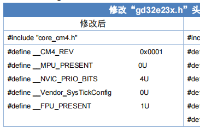
【GD32 MCU 移植教程】2、從 GD32F303 移植到 GD32F503
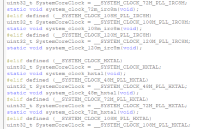
【GD32F303紅楓派開發板使用手冊】第二十講 SPI-SPI NAND FLASH讀寫實驗
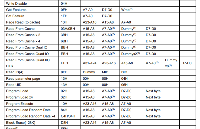
米爾NXP i.MX 93開發板的Qt開發指南

cubeMX能直接導入開發板的BSP嗎?
ELF 1技術貼|如何將Python3.6.9移植到開發板上

fpga開發板與linux開發板區別
如何在飛凌嵌入式T113-i開發板的Buildroot中移植MQTT協議?





 GD32407V-START開發板的BSP框架制作與移植
GD32407V-START開發板的BSP框架制作與移植

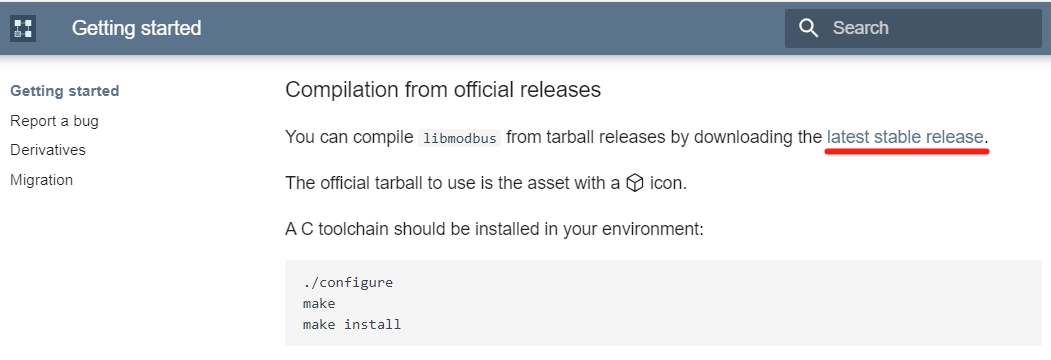
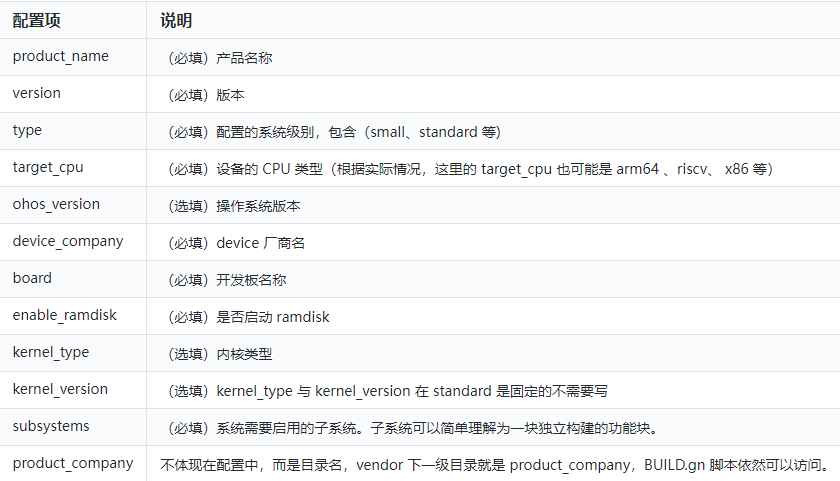










評論